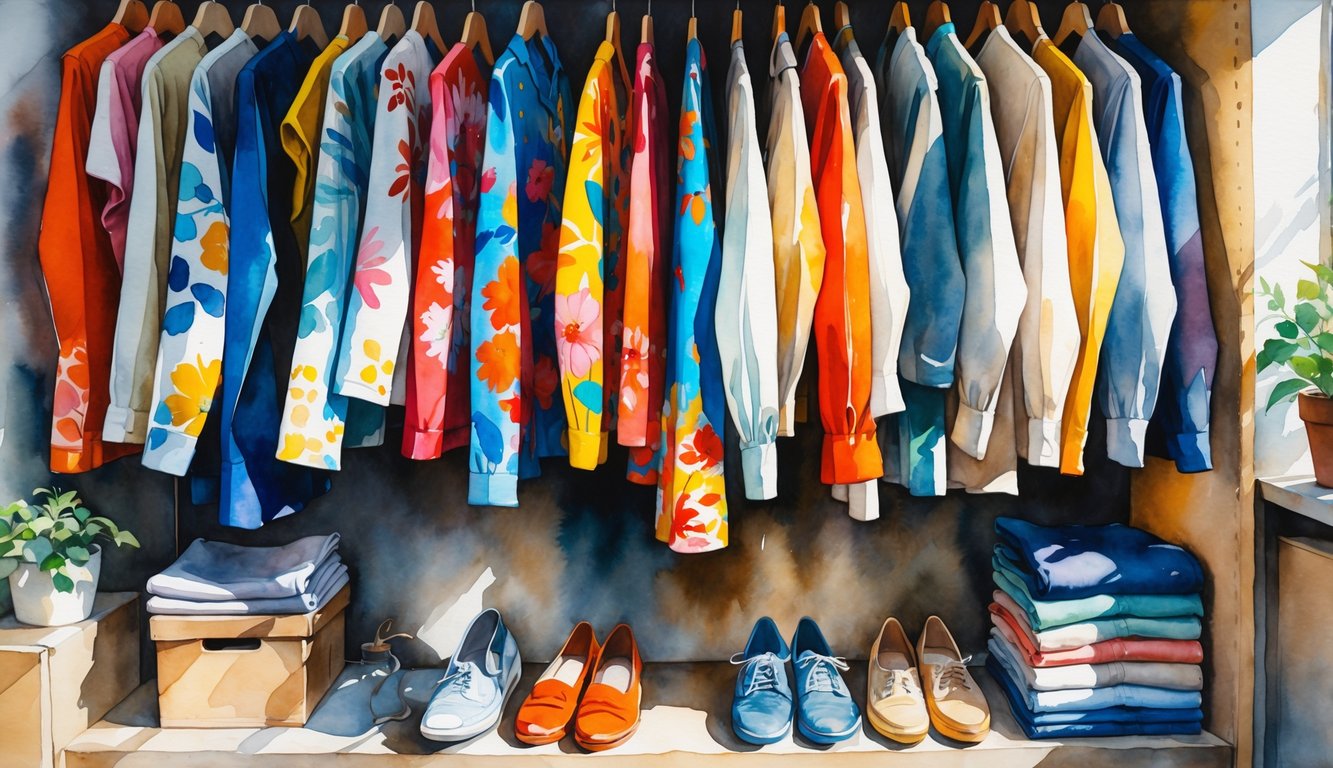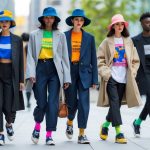
Seasonal Standouts: Spring/Summer Print Trends
Supposedly “timeless” basics are just sitting in my drawer while prints take over. I wore a watercolor check skirt to the grocery store and didn’t even notice until I saw my reflection. Somehow, it worked with a stripey shirt and denim. Fashion logic is dead.
Must-Have Patterns for Warmer Months
People act shocked animal prints are still here. They’re everywhere—zebra, snake, some weird jaguar spot that looks like melted licorice. Spring/Summer 2024 runways pushed them, and by 2025, acid botanicals and pixel florals exploded. Kate Lin, textile consultant, said in Patternbank’s 2025 report, “Digitally-diffused motifs are stomping all over last year’s faded ones.” Classic stripes? Supposedly out, but now it’s rugby stripes mixed with micro-checks—mostly on socks, for some reason. Maxwell Croft (his patterns haunt every mid-range store) said, “The bolder the design, the more wear it gets.” Maybe.
Wildest thing: text prints—giant words in fonts that look like passive-aggressive emails—are everywhere. Makes layering a headache. Three people in my building wore tie-dye mesh tops last week. Are they in a group chat I’m not invited to?
Color Stories that Complement Prints
Who decided pastel and neon should hang out? Some color theory trend I missed. S/S 2024 fashion weeks (always the same four cities) said saturated greens, digital oranges, iffy lavenders, and “unexpected neutrals” (muddy beige, storm blue) are hot. Pantone’s 2025 forecast hyped ‘Cyber Lime’ and ‘Sunspot Yellow’—never met anyone who wears yellow on purpose.
Palette guides just shrug: “Go high-impact or keep it tonal.” Super helpful. What’s actually working? Buyers told me last week: pick one wild print, one moody neutral, or you look like a walking ad. Utility olive, matte black, hi-vis pink—real people pick one wild thing, ground everything else. Metallics are back. Nobody’s thrilled, but everyone’s doing it. Anyone selling a “formula” is just after your money.
Prints on Demand: Technology’s Role in Trendsetting
Prints are bulldozing basics out of my closet, and it’s not even my fault. Print-on-demand tech is running the show now. I can order a custom sweatshirt, 3D type tee, whatever, and it’s at my door before I remember what I bought. Trends aren’t really trends—just algorithms and supply chains spitting out whatever gets a click. I’m not convinced anyone’s in control. Or maybe that’s the point?
Rise of Print-On-Demand Fashion
One day it’s a basic tee, next thing I know, everyone’s wearing lemons and pretending they’re in on some joke I missed. Print-on-demand? Not even new, but the way orders fly in—shirts printed, shipped, gone in days—makes it feel like we’re living in a warehouse fever dream with zero leftovers. Supposedly, this whole circus is worth $12.89 billion globally (2025 numbers, whatever that means), and it’s all about these random micro-drops, like everyone’s just chasing the weirdest thing trending on their For You page (Print-on-Demand Trends 2025). U.S. sellers? Dominating with 75.8% of the top sales, which… feels off, since my feed is 90% Tokyo graphics at 3 a.m. and I don’t even follow Japanese brands.
Scrolling late, I see the same prints everywhere—Etsy, Redbubble, Amazon. No escape. Sizing’s still a mess. Algorithms can guess my mood but can’t figure out pants length. Sometimes designs leak in weird Discords, and suddenly half the internet’s wearing them before I even know what they are. There’s this lag between TikTok virality and what my aunt shows up in at brunch, and I can’t tell if it’s hilarious or dystopian.
Customization and Mass Appeal
Customization’s supposed to be the big deal, right? Like, now I can slap “World’s Okayest Uncle” on a hat and call it a day. Printful, Teespring, all those sites just let anyone upload whatever meme they want. But honestly, most people just pick whatever’s trending on the homepage—saw a Shopify report on it, not even subtle. Everyone acts like they’re unique, but it’s always black, white, heather gray. “Options,” they say. Sure. It’s just cheaper for them.
Mass appeal goes backwards here. I make a mug for my uncle’s hobby, suddenly the site’s pushing it on strangers, hoping it’ll catch on. It’s all about speed—order, print, deliver, repeat, like some weird dopamine loop. Returns, though? Nobody talks about the graveyard of “what was I thinking” joggers under my bed. Tech can’t fix taste. Maybe AI will, but right now, even OpenAI can’t keep up with the Gen Z frog meme surge.
Sustainability and Ethical Choices in Printed Fashion
Here’s what bugs me: everyone’s obsessed with flashy prints, but nobody stops to think about what actually goes into these shirts. Energy, chemicals, low wages—none of it just vanishes after you do laundry. I see “eco-friendly” slapped on a tag and wonder, is it real or just marketing? Who’s checking?
Eco-Friendly Production Methods
Organic cotton’s still the golden child—less water, less energy (88% and 62% less, if you believe Henry Textile), but nobody talks about the carbon hit from shipping it halfway around the world. Recycled polyester sounds great until you realize every wash is basically a microplastic party for the ocean. I keep hearing about waterless dyes and digital printing—“low VOCs,” whatever that means—but even “natural” dyes can wreck water supplies if nobody’s watching. Still waiting for a hoodie with a carbon footprint label. Found one in Portland, spilled coffee on it instantly. Figures. Biodegradable ink? Sometimes it just ends up in the river and nobody says a word.
Supporting Conscious Brands
Brands love to say “fair labor,” but I always check for real supply chain audits. Patagonia’s got receipts—actual factory photos, GPS pins. Most influencer brands just wave their hands and say “ethical,” no proof. Picking who to trust feels like a gamble. Does one recycled tag mean anything? Am I just gullible?
Wages are still a disaster. 2024 reports say garment workers mostly can’t cover basics, let alone save up (“Ethical and Sustainable Fashion Trends in 2024”). I’ll DM brands about the Bangladesh Accord, maybe get a real answer, usually just a FAQ with emojis. Transparency’s the only thing that feels real—traceable fabrics, public wage numbers, outside certifications. Otherwise, it’s all just marketing. Side note: my local “sustainable” shop pushes bamboo viscose but can’t explain why it’s sometimes considered unsustainable. I still buy it anyway.



